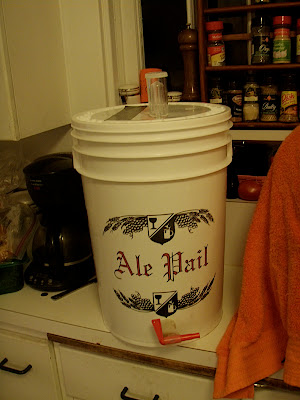You don't/didn't need to do anything, except, pitch your yeast and walk away, and especially IGNORE WHAT YOUR AIRLOCK DOES OR DOESN'T DO.
Bubbling in primary SHOULD slow eventually...Bubbling stopping or slowing down doesn't mean
fermentation has stopped it ONLY means bubbling has. An airlock is a VENT, a VALVE for EXCESS CO2. It's not a magic fermentation gauge. When the majority of sugars are eaten in the initial burst of fermentation, lots of co2 is released. As it slows down, bubbling ceases or stops altogether because there's not as much EXCESS Co2 being released.
But that doesn't mean fermentation is over, just that it's slowed down.
Fermentation is not always dynamic...just because you don't SEE anything happening doesn't mean that the yeast aren't happily chewing away at whatever fermentables are in there....the only way to know comes from gravity readings, and nothing else.
People who rack to a secondary too soon based on bubbling often get stuck fermentation, because they've taken the beer off the yeast while it was STILL FERMENTING.
It could just as easily be bubbling or stop bubbling for that matter, due to changes in barometric pressure, temperature, or whether or not the cat or vacuum cleaner bumped into it, as it could be to because it's still fermenting.
Activity, action, bubbles, even krausen can be affected by the envoironment just as much as it being caused by the yeast...so going by that is NOT reliable.
If you want to know what's going on with your beer, then take a gravity reading. The only way to truly know what is going on in your fermenter is with
your hydrometer. Like I said here in my blog, which I encourage you to read,
Think evaluation before action you sure as HELL wouldn't want a doctor to start cutting on you unless he used the proper diagnostic instuments like x-rays first, right? You wouldn't want him to just take a look in your eyes briefly and say "I'm cutting into your chest first thing in the morning." You would want them to use the right
diagnostic tools before the slice and dice, right? You'd cry malpractice, I would hope, if they didn't say they were sending you for an MRI and other things before going in....
Going by airlocks is the same thing. There's still things going on under the surface despite what an airlock is or isn't doing.
New brewers always feel like they need to hover over their beers, and try to fix it or help it along, usually when the beer needs no help at all. Your beer was FINE.
In the future, pitch your yeast and;
They actually know more about how to make beer than YOU do. And rarely do they ever need our interference once yeast is added.





